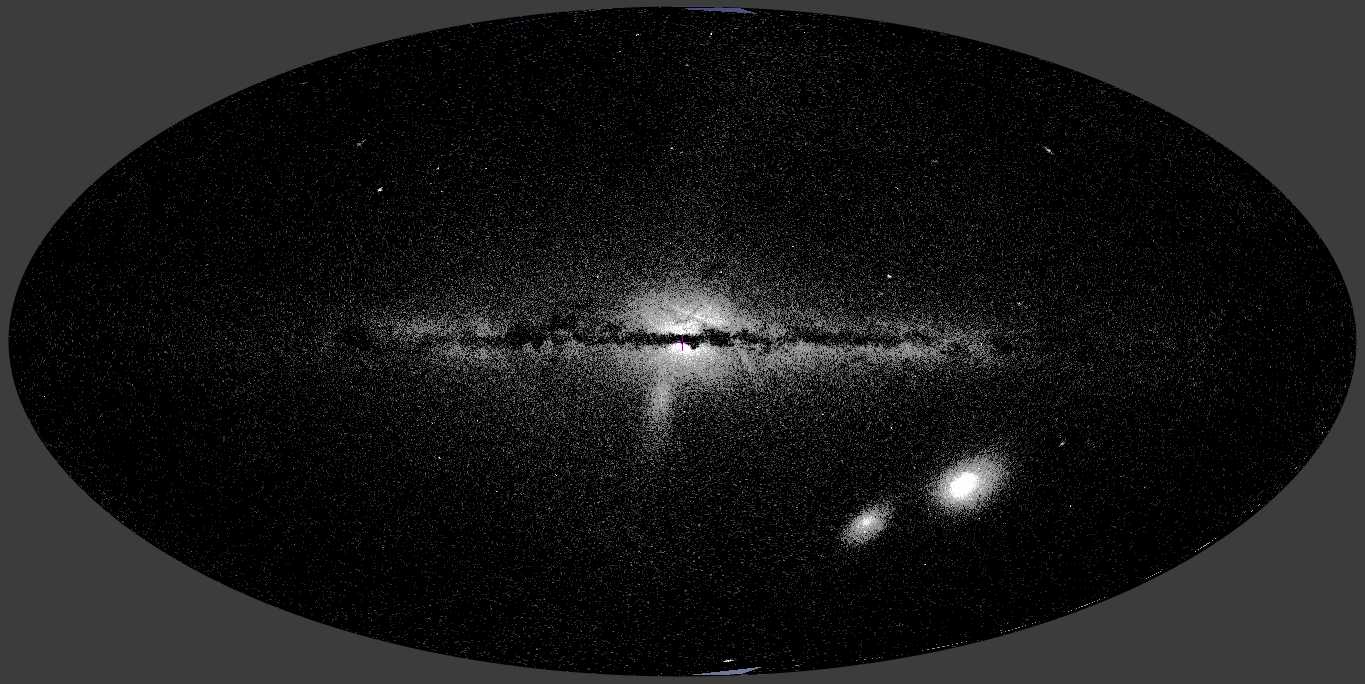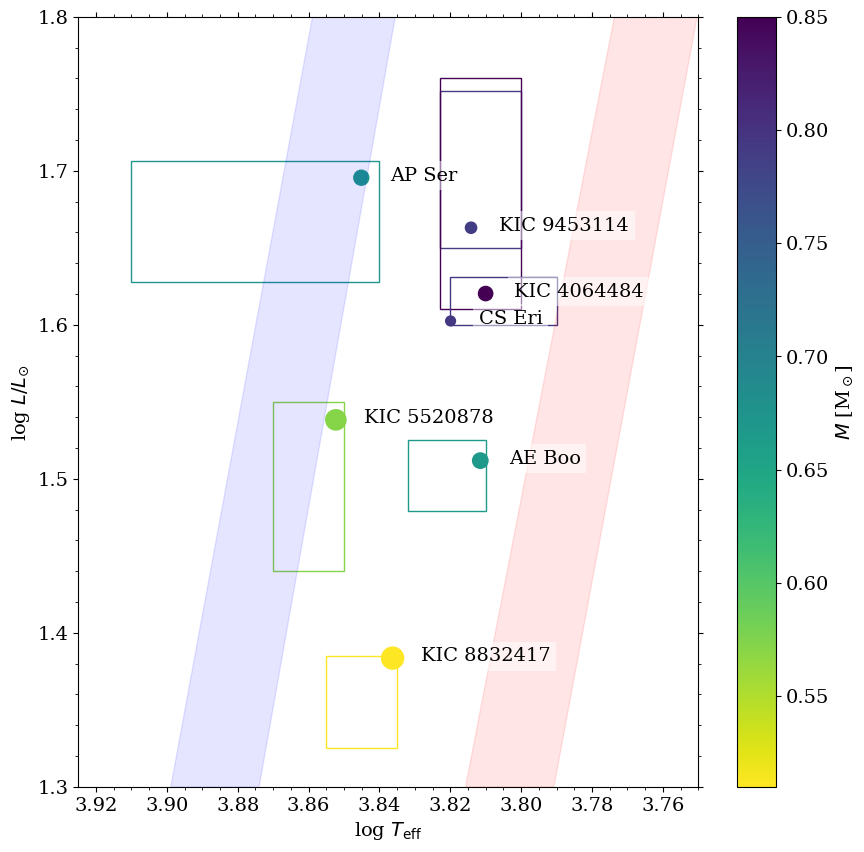RR Lyrae stars are old, pulsating stars that burn helium in their cores for fuel. Their progenitors were similar to our Sun, but they are now much larger and brighter than our Sun. We know of hundreds of thousands of RR Lyrae stars within the Milky Way, and we can use them to study how our Galaxy has evolved since its formation. However, one fundamental measurement has so far eluded astronomers: there has been no reliable way to determine the masses of RR Lyrae stars – until now.

The distribution of known RR Lyrae stars in the sky, based on identifications from the European Gaia mission. The thick disk of the Milky Way and the two Magellanic clouds are clearly visible, as is the core of the Sagittarius dwarf galaxy, the vertical feature just below the center of the Milky Way. (Source: Gaia Collaboration (2022) / H. Netzel / made with Aladin)
RR Lyrae stars are also pulsating stars, with pulsations driven by a “stellar engine” known as the kappa mechanism: a process by which a sub-surface layer inside the star containing partially ionized helium modulates the amount of energy that can leave the stellar core. This layer acts as a heat engine, so the envelopes of pulsating stars expand and contract periodically, as waves propagate through their interiors. This phenomenon is observed by astronomers as periodic changes in brightness.
The kinds of waves that propagate through a particular star depend on the physical conditions inside the star. As a result, we can study a star’s internal properties based on its pulsations, much like studying the inside of the Earth through seismology. In the case of stars, this field is called asteroseismology.
For many years, RR Lyrae stars were thought to be simple radial pulsators: stars whose spherical symmetry is preserved during pulsation. With only one two pulsation modes present, it was not possible to study them by asteroseismology, which requires the identification of multiple modes of pulsation. In the last decade, however, excellent ground and space-based observations revolutionized our view on RR Lyrae stars. Such modern observations have revealed that RR Lyrae stars can have additional, non-radial periodicities, just with very small amplitudes.

Radial pulsation (top) drives the characteristic brightness variations of RR Lyrae stars (middle). High-precision photometry can, however, reveal the signs of small-amplitude non-radial pulsations hidden beneath that large signal (bottom). (Source: Henryka Netzel (EPFL))
The origin of these modes was unknown for a long time, but the growing number of stars showing these periodicities facilitated the development of a hypothesis that the observed signals were due to non-radial modes of pulsations of degrees 8 or 9. This means that 8 or 9 nodal lines divide the surface into separate zones. Modes at such degrees were previously thought to be unobservable for distant stars.
Nevertheless, these newly identified pulsation modes enabled the application of asteroseismic methods to study RR Lyrae stars, and in particular, to address the long-standing problem of mass measurements. Fortunately, with these additional non-radial modes, if the theory correct, the masses of RR Lyrae stars can be estimated using asteroseismology.
This mass determination procedure was successfully performed by Drs. Henryka Netzel, László Molnár, and Meridith Joyce, researchers at the Konkoly Observatory in Budapest, Hungary, for seven well-constrained RR Lyrae stars. They combined high-precision observations from the Kepler, TESS, and Gaia space telescopes with theoretical models of stellar pulsations for these stars to test the theory behind the high-degree modes in RR Lyrae stars. Using independent observations, they determined constraints on physical parameters such as the observed brightness or metallicity of these stars. They then computed a grid of theoretical models of RR Lyrae stars along various parameters (such as luminosity, metallicity, temperature, and, most importantly, mass) with the stellar pulsation code and tested whether such models would show pulsations and, if so, what the pulsation periods of the different modes would be. Then they identified the models that matched each star the most.
The results, published by lead author Dr. Netzel (now a postdoc at EPFL in Lausanne, Switzerland) and her colleagues in the journal Monthly Notices of the Royal Astronomical Society, show that periodicities in RR Lyrae stars can be successfully reproduced using the proposed identification of 8-9 degree non-radial modes. The authors successfully derived asteroseismic masses for the stars studied, ranging from 0.5 to 0.85 solar masses, in good agreement with the predictions of stellar evolution models and other indirect means of estimating mass. They now plan to extend this research and use this new method to determine masses for other RR Lyrae pulsators and to compare them with the masses of stars in evolutionary phases before and after the RR Lyrae stage of stellar life.

Results from the asteroseismic model fits for the seven RR Lyrae stars, plotted onto the Hertzsprung-Russell diagram (stellar luminosity vs surface temperature). Blue and red lines mark the edges of the instability strip within which stars pulsate. Dots are the positions of the best-fitting models, and boxes mark the uncertainty ranges. Colors indicate the estimated mass of each star: as the figure indicates, brighter RR Lyrae stars have generally higher masses. (Source: Netzel et al. (2023) / MNRAS)
Source: Netzel, H., Molnár, L., Joyce, M.: Detailed asteroseismic modeling of RR Lyrae stars with non-radial modes, MNRAS, 2023
A free version of the article is available on arXiv. The research was supported by the ÚNKP-22-4 New National Excellence Program of the Ministry for Culture and Innovation.
Contact: László Molnár, public.btn.email